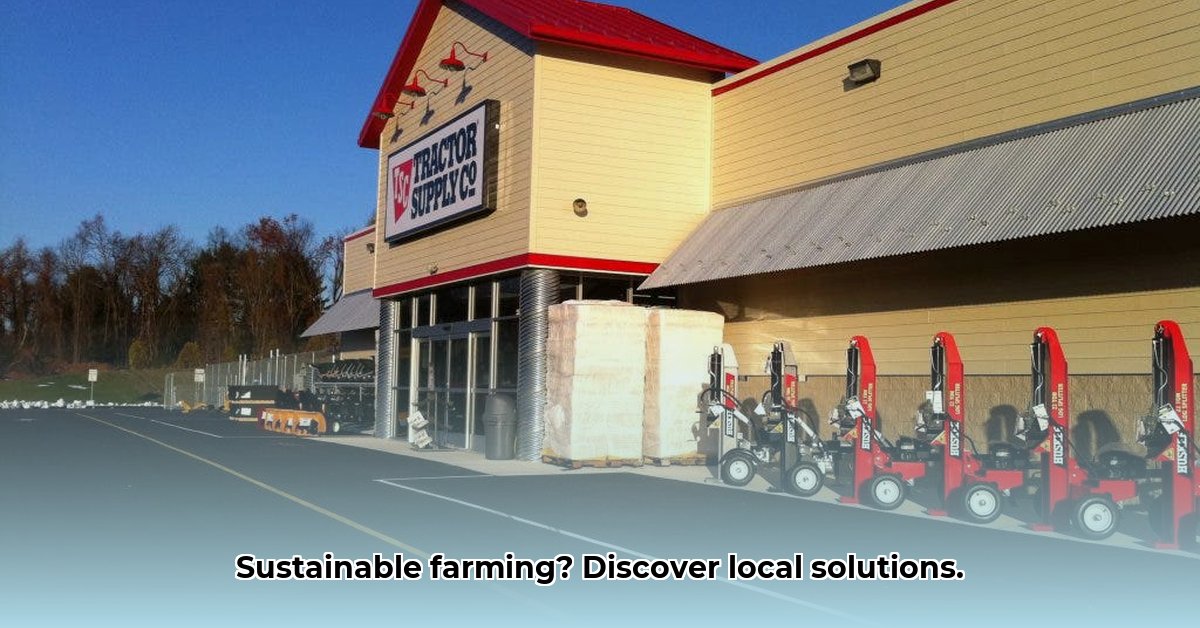
Belle Vernon Tractor Supply (BVTS) plays a vital role in supporting local agriculture, but its contribution to sustainable farming practices requires closer examination. While BVTS provides essential supplies like seeds, fertilizers, and tools, the extent of its commitment to environmentally friendly practices needs further clarification. Currently, a comprehensive public assessment of their supply chain's sustainability is lacking. Key questions remain unanswered: What percentage of their products utilize eco-friendly packaging? Do they prioritize suppliers committed to sustainable farming methods? What efforts are made to source locally, minimizing transportation emissions? Addressing these questions is crucial for a complete understanding of BVTS's environmental footprint and its contribution to a sustainable local food system. For more on sustainable gardening options, check out this helpful resource.
Understanding BVTS's Role in Sustainable Agriculture
The role of BVTS in sustainable agriculture is a subject of ongoing debate. Some argue that its primary function is simply supplying the tools for sustainable farming, while others contend that BVTS has a broader ethical responsibility to actively promote and support environmentally conscious practices. This discussion highlights the need for increased transparency regarding their sourcing and operational practices. A more detailed understanding of BVTS's supply chain and its commitment to sustainability is vital for both the company and the community it serves. How can we better assess the overall environmental impact of BVTS's operations? This requires further investigation and the proactive release of relevant data.
Empowering Local Growers: Actionable Steps for Sustainable Farming
For local growers, BVTS offers opportunities to improve sustainability. However, active participation is required. By making informed choices, reducing waste, and advocating for change, growers can significantly increase the impact of their sustainability efforts.
1. Prioritize Sustainable Products: Make conscious purchasing choices. Actively seek out organic seeds, fertilizers, and other supplies with certifications like USDA Organic, ensuring that your purchasing decisions align with your sustainability goals. Carefully review product labels to identify items with reduced packaging and transparent sourcing claims. Such mindful selection can create a notable positive impact on your farm's environmental footprint.
2. Implement Waste Reduction Strategies: Sustainable farming extends beyond product selection. Actively reduce, reuse, and recycle. Utilize reusable containers and tools. Embrace composting techniques to enhance soil health naturally. Properly dispose of hazardous materials such as pesticides in full compliance with local regulations. These simple yet impactful practices contribute substantially to a greener farming operation.
3. Advocate for Improved Sustainability: Engage directly with BVTS staff. Communicate your commitment to sustainable agriculture and voice your support for a broader selection of eco-friendly products. Encourage increased transparency in their supply chain and suggest specific brands known for sustainability initiatives. Your constructive feedback directly influences BVTS's business strategies and fosters a more sustainable future for the local farming community. What specific product lines would you like to see expanded at BVTS to better support your sustainability goals?
A Collaborative Path Towards a Sustainable Future
The journey towards sustainable agriculture requires a collective effort. BVTS, along with local farmers, consumers, and government agencies, each plays a pivotal role. Consider the following steps for enhanced collaboration:
Actionable Steps for Stakeholders:
BVTS Management: Conduct a comprehensive environmental impact assessment of the supply chain. Develop and publicly communicate a transparent sustainability plan with clearly defined goals and timelines. Actively promote eco-friendly product choices within the store. How can BVTS effectively communicate their sustainability initiatives to consumers and farmers?
Small-Scale Farmers: Optimize the use of resources sourced from BVTS. Minimize waste through efficient farming methods and responsible product utilization. Support policies promoting sustainable agriculture and advocate for improved access to sustainable resources. What specific challenges do small-scale farmers face in adopting sustainable practices?
Consumers/Hobbyists: Support businesses demonstrating a commitment to sustainability. Demand greater transparency regarding sustainability practices from retailers like BVTS. Educate yourselves on environmentally sound farming techniques and actively make purchasing decisions that reflect your commitment to sustainable agriculture. How can consumers most effectively influence the sustainability practices of retailers like BVTS?
Government Agencies: Invest in research focused on sustainable farming. Offer financial incentives and support for the adoption of sustainable technologies by local farmers. Develop infrastructure that underpins sustainable agricultural practices. What specific government policies could foster greater sustainability in the agricultural sector?
The creation of a truly sustainable agricultural system is an ongoing process, requiring the collaboration of all involved parties. BVTS, in partnership with local farmers, consumers, and government entities, has a critical role to play in shaping a more eco-friendly future for our community. Through collaborative action, we can collectively build a more sustainable agricultural landscape.